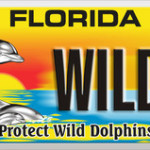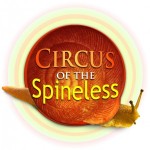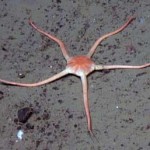Have you seen the new Jurassic World trailer? As if I even have to ask… Of course you have. And of course you are amazed by the scene featuring what appears to be either a short-necked species of pliosaur (maybe a Kronosaurus?) or a super-sized version of a mosasaur, (an extinct marine reptile, not a dinosaur) being fed what appears to be a great white shark (Carcharodon carcharias).
Here are a few screen grabs of the juicy action:



I cannot wait to see this scene in Imax 3-D!
I’ll leave for Dr M or Dr Martini (they’re the mathemagicians) to sort out how deep that holding pool would need to be to allow a predator of that size to generate thrust sufficient to breach the surface. Or why the splash-down doesn’t displace sufficient water to inundate the arena.
But here’s my problem. Let’s assume that Jurassic World is still set on one of the fictional islands off Costa Rica. Costa Rica is party to the UN Convention on the International Trade in Endangered Species of Wild Flora and Fauna (or CITES for short). As I’ve reported before, CITES works by subjecting international trade in specimens of selected species to certain controls. All import, export, re-export and introduction of species covered by the Convention has to be authorized through a licensing system. The species covered by CITES are listed in three Appendices, according to the degree of protection they need. Great white sharks are currently CITES Appendix II listed, which includes species not necessarily threatened with extinction, but in which trade must be controlled in order to avoid utilization incompatible with their survival. As of March 2010, the species has also been included in Annex I of the CMS Migratory Sharks MoU, which strives for increased international understanding and coordination for the protection of certain migratory sharks.
Parties wishing to continue international trade in any of these listed species must demonstrate a non-detriment finding in order to be provided permits for international trade. A non-detriment finding represents a comprehensive stock assessment of the target species that considers an analysis of population status, distribution, populations trajectories, current harvest rates, ecosystem roles and implications, and existing trade data. In total, a non-detriment finding demonstrates that (in the case of white sharks) fishing for and international trade in these species will not cause the collapse or critical depletion of the species nor loss of any ecosystem functions those species provide.
I presume that InGen (if they are still the IP and share holders for Jurassic World), as a US-based company doing business in Costa Rica is obligated to operate within parameters dictated by Costa Rican law. I’m not aware of a white shark fishery in Costa Rica, so I presume that Jurassic World buys their sharks from foreign fleets. In which case I would like to see Jurassic World produce their non-detriment finding for the great whites they are sourcing for prehistoric wildlife food. Until such time I cannot endorse anyone planning to holiday in Jurassic Park this summer.
That is all. Now back to my bubble bath.






I read somewhere that there are only 2,000 adult great whites in the Eastern Pacific. If this show takes place 5 times per day, they are going to run out of dinosaur food in about a year.
Great post. Would be fun to start a change.org petition demanding that the film studio be charged with violating international endangered species protections — unless, of course, they can prove no animals were harmed during filming.
Also, it’s important that we start a petition demanding Chris Pratt play Andy from Parks & Recreation in every movie he’s in, and also in real life.
My guess? If they can clone a Kronosaur, they can clone a shark. Problem solved.
The real danger at Jurassic World isn’t that you will be eaten by giant aquatic reptiles. In fact, it’s the exact opposite- eating Kronosaurus meat will put you at severe risk of mercury intoxication. Per Mull et al. (2012), and assuming 10x magnification per trophic level, you’re looking at around 30mg of methylmercury in a 1-kilo kronosaur fillet. That’s 3x higher than the gray mullet they were eating at Minamata in the 60s.
The islands in Jurrasic park were purchased from Costa Rica. They are no longer part of that country. And they do not come under Costa Rica law.
:)
Hadoken.
Definitely a mosasaur of some kind. See the pharyngeal teeth? Nice attention to detail.
The producers told me that the sharks used in the park were cloned specimens.
They have the same kind of fish tank used in that shot for cloning and harvesting white sharks for feeding purposes.
Some minor points to quibble about:
1. The background is definitely the Nā Pali coastline of Kauai, Hawaii. In which case they would need to contend with the US ESA and Magnuson-Stevens Act.
2. It is possible that at this point in the future, great white sharks may have recovered and been delisted from CITES, ESA and other acts.
3. I am deeply suspicious that they could have received permission from their Institutional Animal Care and Use Committee. Hard enough to get permission to touch fish in research, let alone allowing devouring of entire sharks.
4. The bigger danger to their economic model, though is the recent documentary BlackMosasaur which condemns the imprisonment of sentient mosasaurs in a pool clearly too small for their social structure and migratory habits.
Then the US (also party to CITES) would still be bound to a non-detriment finding. Also the Magnuson-Stevens Act.
Trevor Branch wins the internet.
If they can clone dinosaurs in this fictional universe, they can clone great white sharks.
Well geez. If they can clone sharks, and given that its a mosasaur, it shouldn’t have been a Great White, it should have been a Ginsu Shark!
Missed opportunity for awesome….
If I were running the park, I wouldn’t even use real great whites: they are hard to raise and handle and have all those pointy things in the front end. I’d have the scientists whip me up a manufacturable dummy made of harmless plant fibers and stuffed with fish from the bycatch of local fleets. All problems solved.
I wonder how that thing would do, when pitted up against Dinoshark, Sharktopus, and the two headed shark??
I love this website. Only here can I truly sate my love of picky film/nerd lore, sharp wit, and marine science. Many thanks!!